Презентація на тему «Natural disasters» (варіант 4)
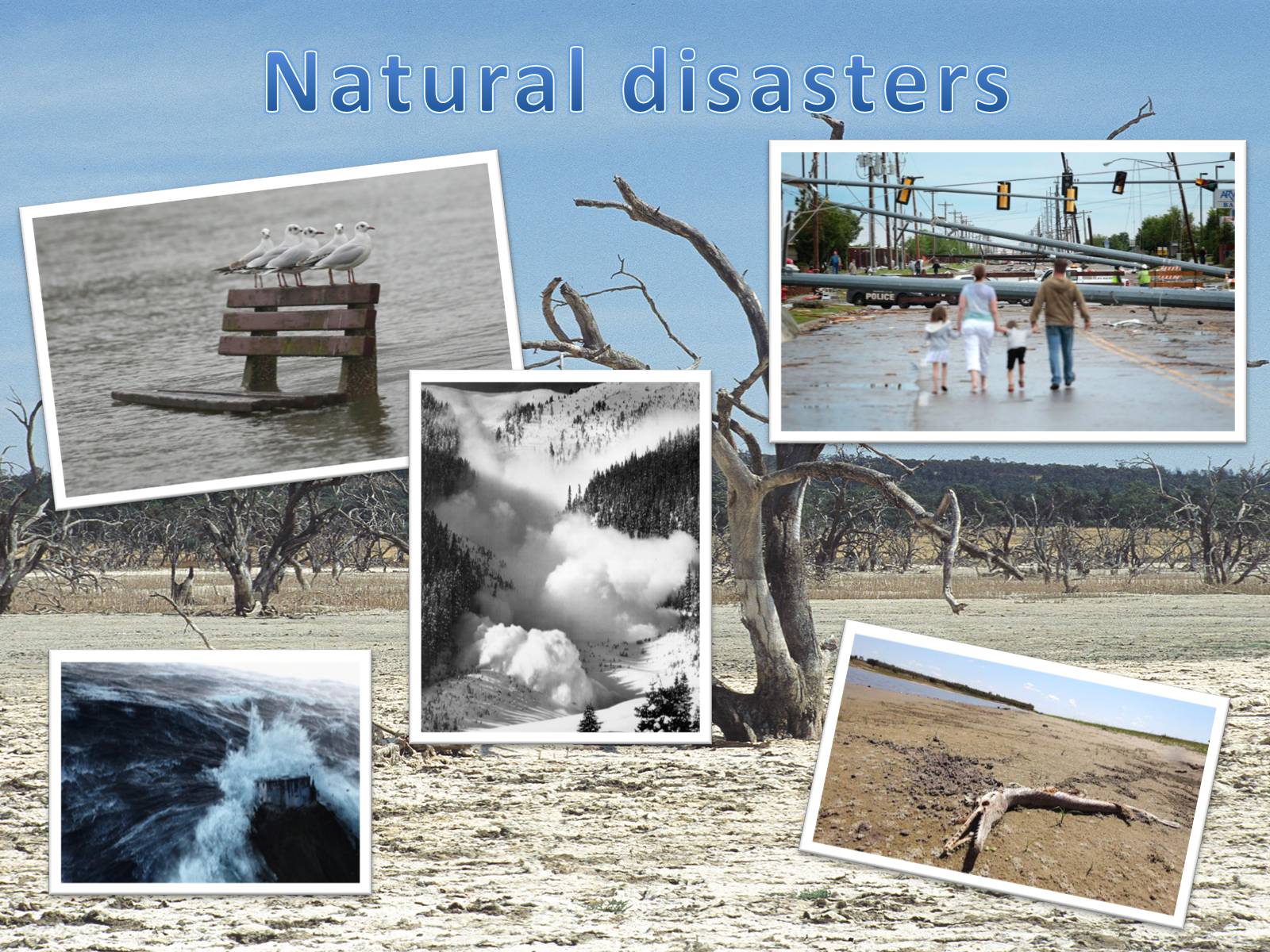
Natural disasters
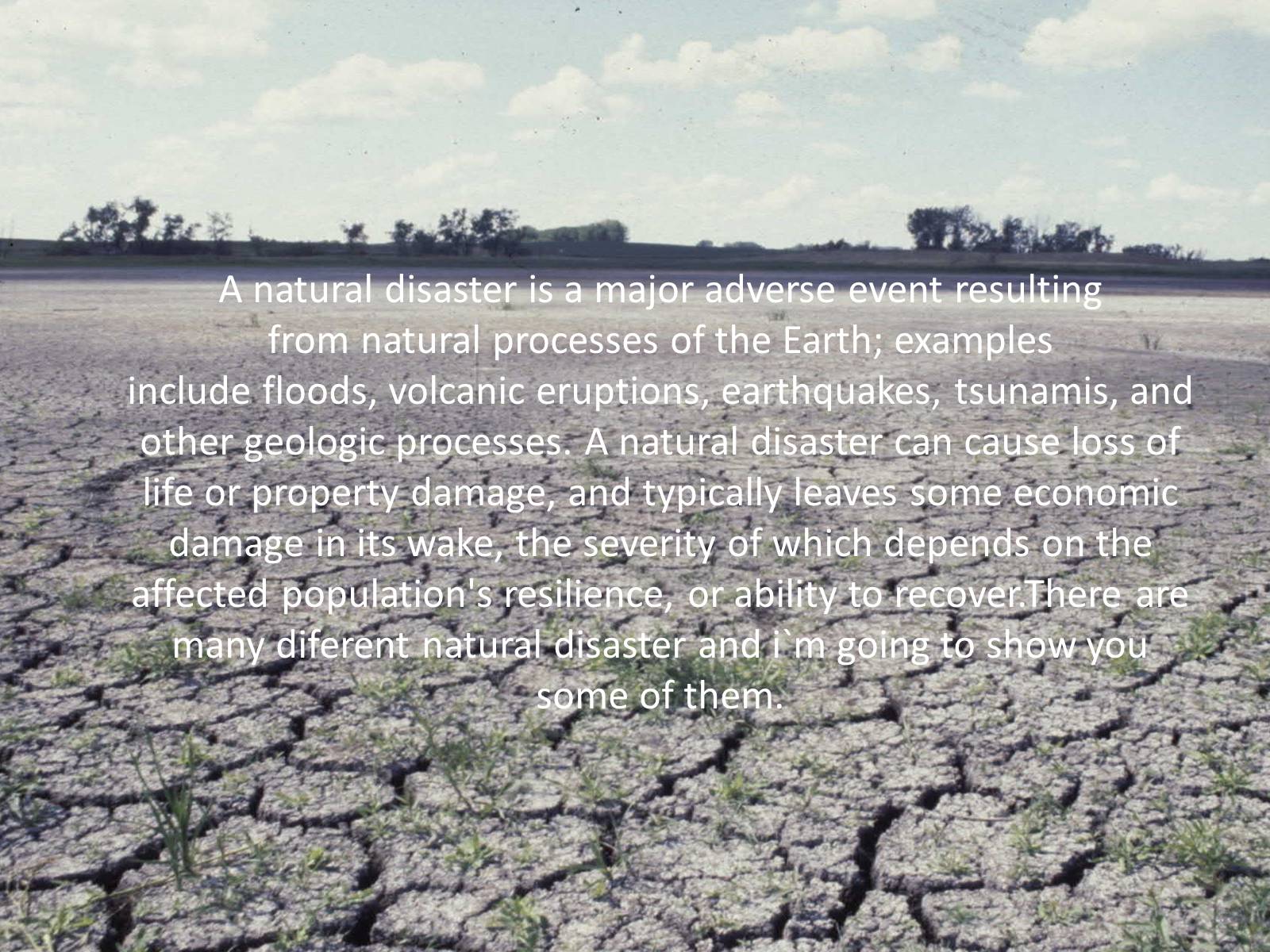
A natural disaster is a major adverse event resulting from natural processes of the Earth; examples include floods, volcanic eruptions, earthquakes, tsunamis, and other geologic processes. A natural disaster can cause loss of life or property damage, and typically leaves some economic damage in its wake, the severity of which depends on the affected population's resilience, or ability to recover.There are many diferent natural disaster and i`m going to show you some of them.
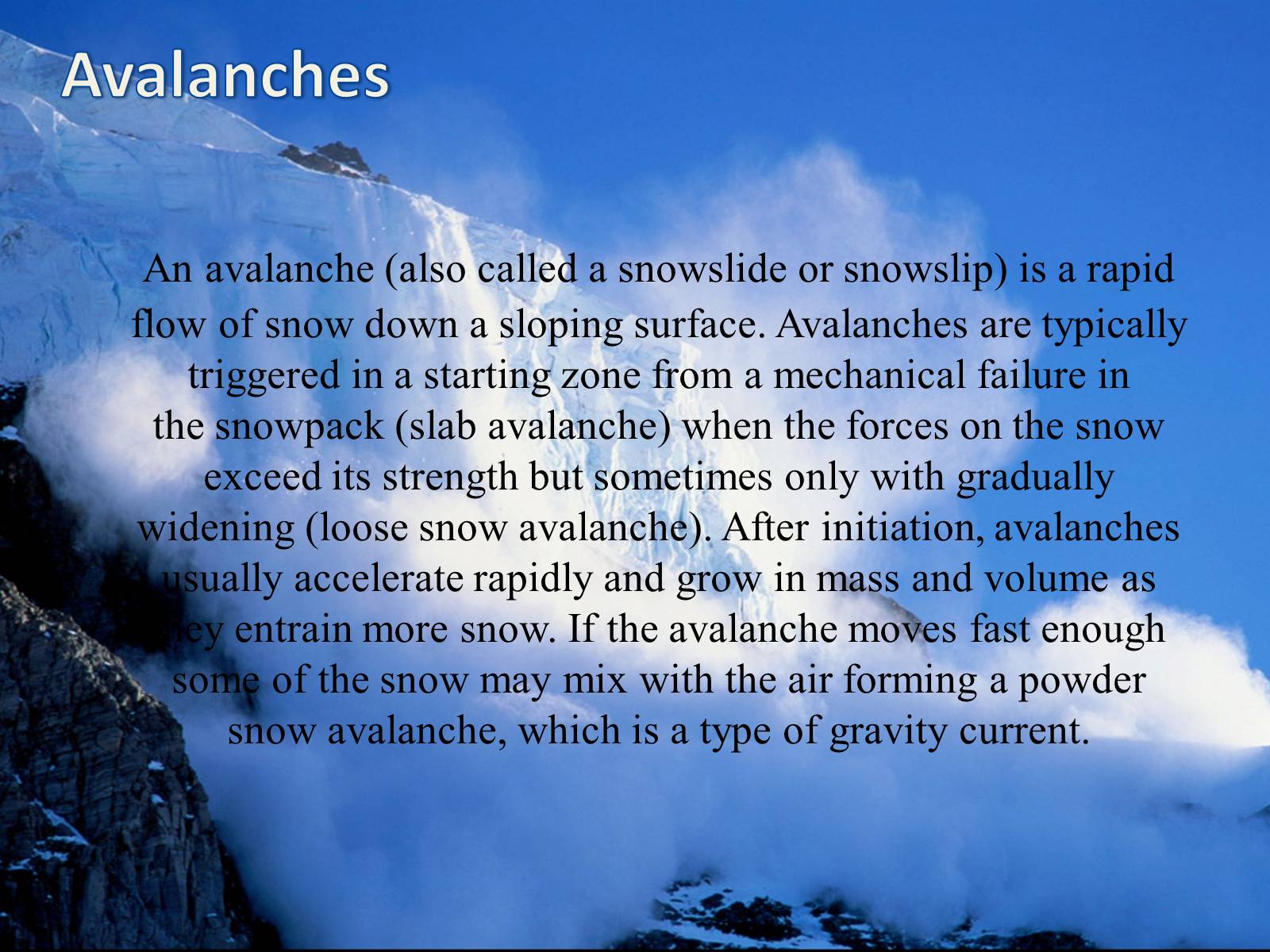
Avalanches
An avalanche (also called a snowslide or snowslip) is a rapid flow of snow down a sloping surface. Avalanches are typically triggered in a starting zone from a mechanical failure in the snowpack (slab avalanche) when the forces on the snow exceed its strength but sometimes only with gradually widening (loose snow avalanche). After initiation, avalanches usually accelerate rapidly and grow in mass and volume as they entrain more snow. If the avalanche moves fast enough some of the snow may mix with the air forming a powder snow avalanche, which is a type of gravity current.
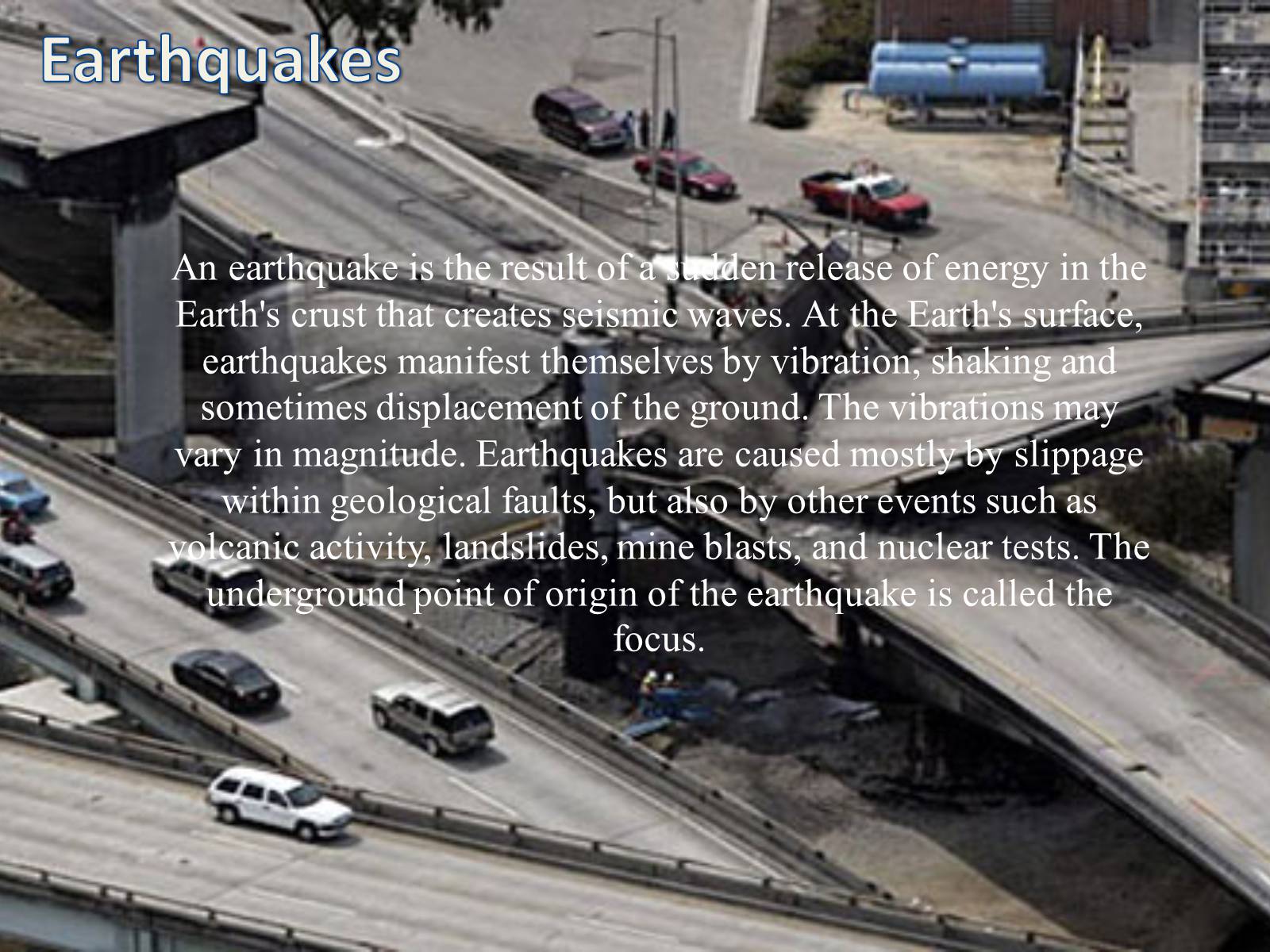
Earthquakes
An earthquake is the result of a sudden release of energy in the Earth's crust that creates seismic waves. At the Earth's surface, earthquakes manifest themselves by vibration, shaking and sometimes displacement of the ground. The vibrations may vary in magnitude. Earthquakes are caused mostly by slippage within geological faults, but also by other events such as volcanic activity, landslides, mine blasts, and nuclear tests. The underground point of origin of the earthquake is called the focus.
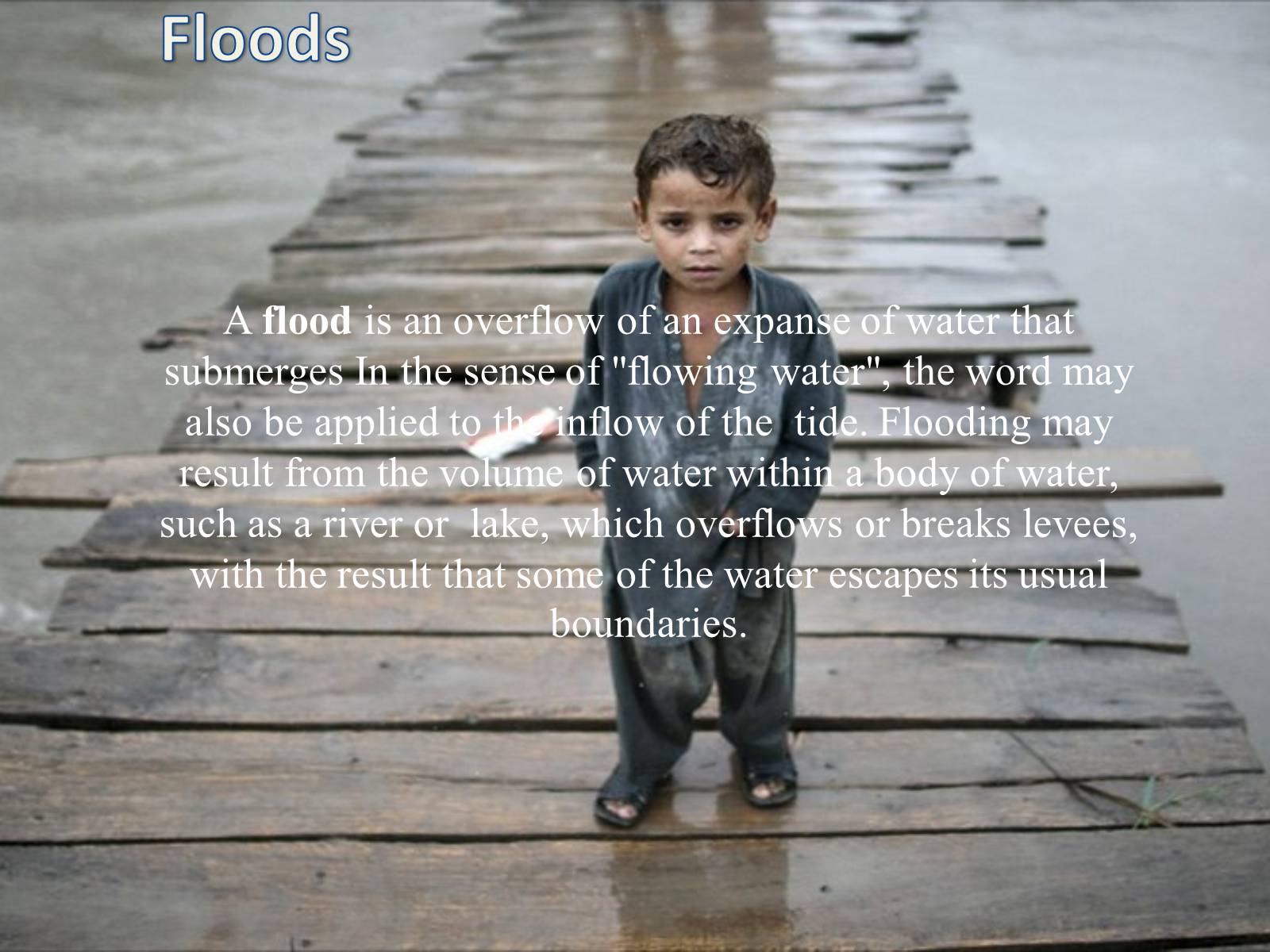
Floods
A flood is an overflow of an expanse of water that submerges In the sense of "flowing water", the word may also be applied to the inflow of the tide. Flooding may result from the volume of water within a body of water, such as a river or lake, which overflows or breaks levees, with the result that some of the water escapes its usual boundaries.
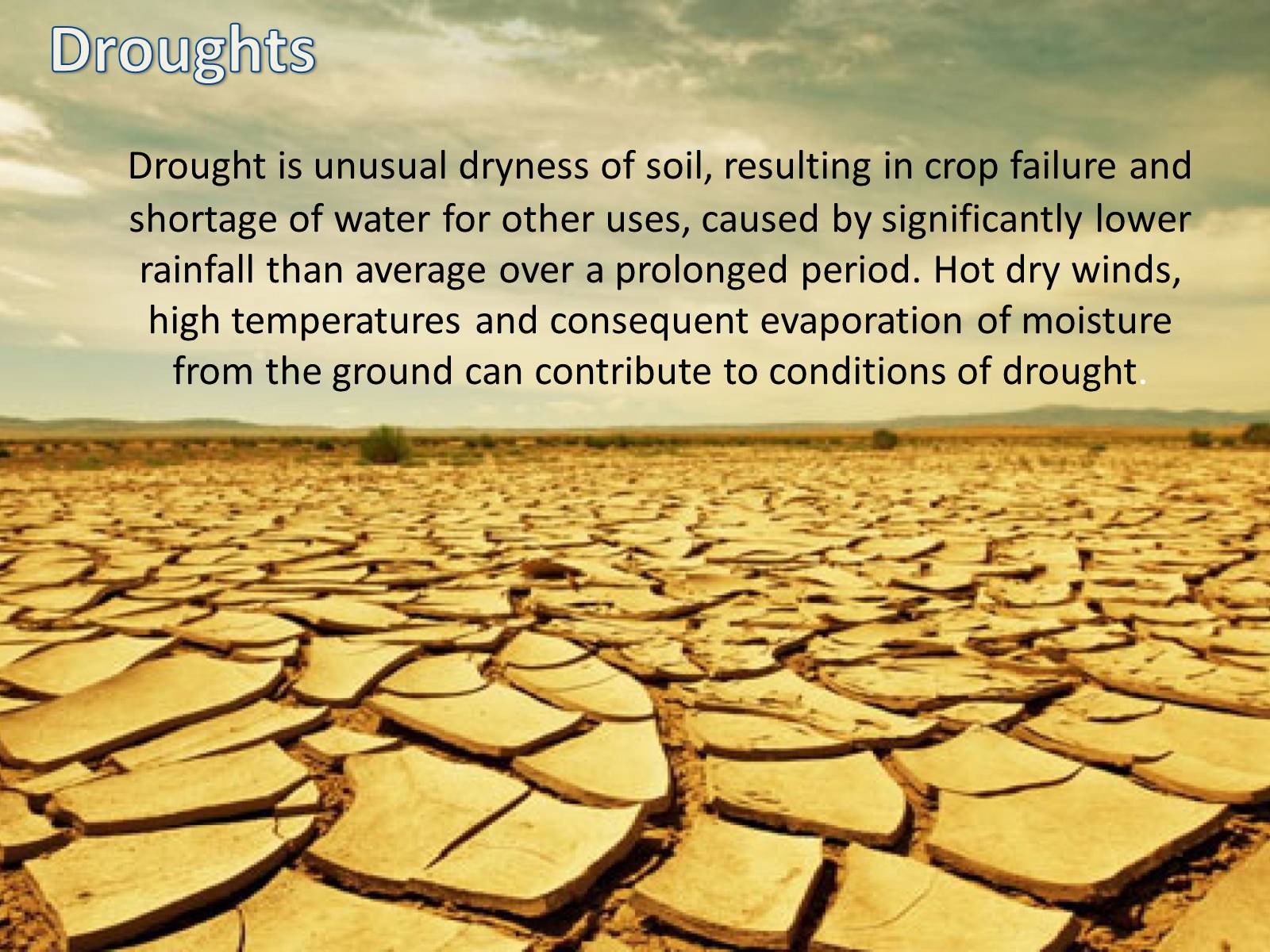
Droughts
Drought is unusual dryness of soil, resulting in crop failure and shortage of water for other uses, caused by significantly lower rainfall than average over a prolonged period. Hot dry winds, high temperatures and consequent evaporation of moisture from the ground can contribute to conditions of drought.
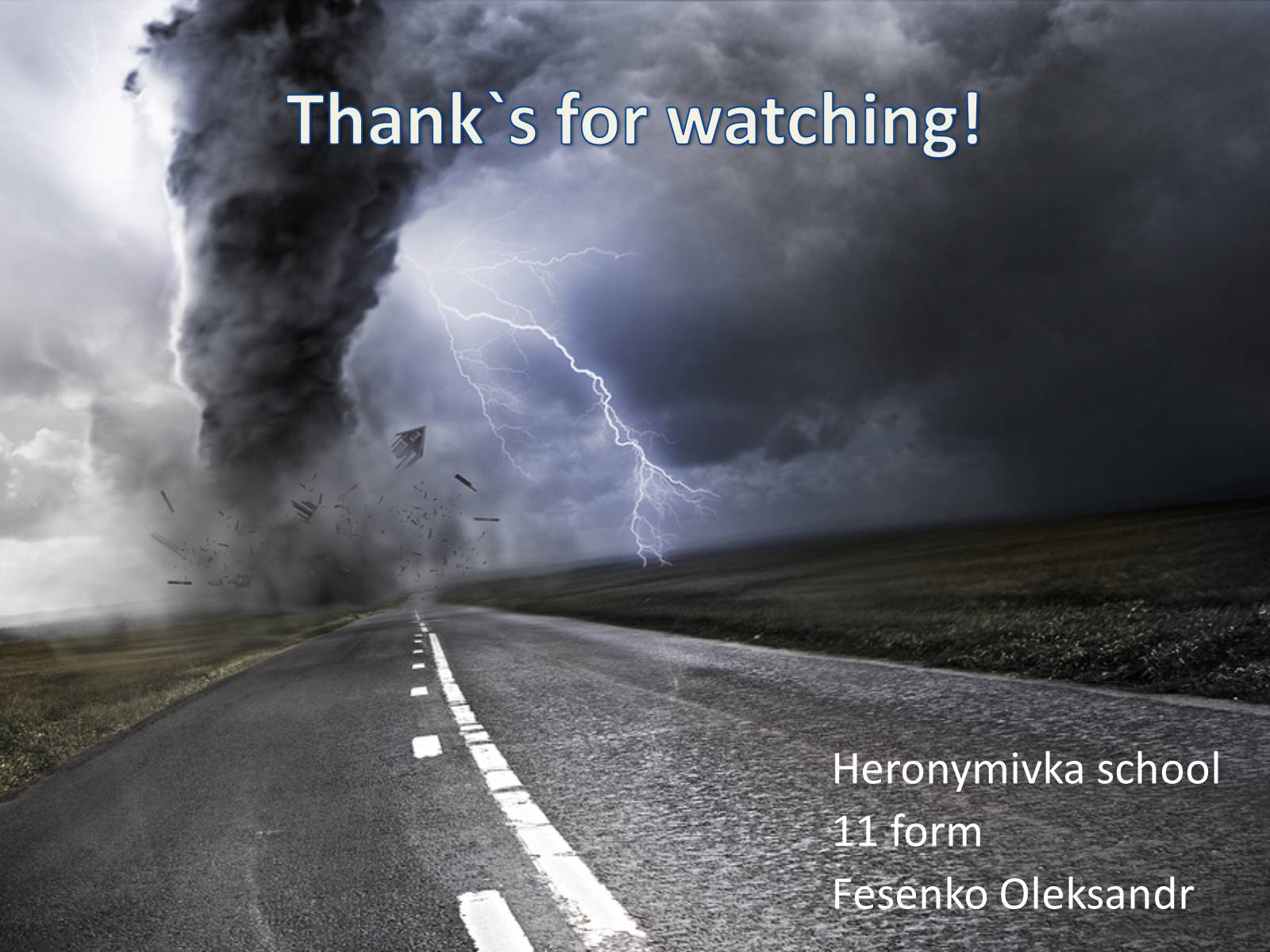
Thank`s for watching!
Heronymivka school
11 form
Fesenko Oleksandr